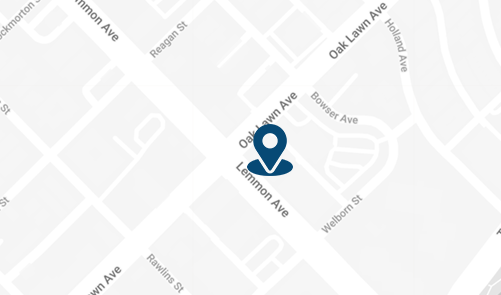By: Dr. Dev Batra | 01.29.23
Chronic vein disease develops several stages, of which venous ulcers are generally the last and the most serious. These open, shallow wounds on the lower leg or ankle are slow to heal and can quickly become infected if not treated. About 1% of Americans develop these ulcers. They are common in older people, especially women.
Interventional radiologist Dr. Dev Batra and his team at Texas Vascular Institute have extensive knowledge about chronic vein disease and venous ulcers. The team uses state-of-the-art diagnostic tools to understand the underlying cause of your problem, as well as advanced treatment options for getting you back to better vein health. Here’s what we want you to know about venous ulcers.

The stages of chronic vein disease
If not treated, vein disease can become a progressive problem with multiple stages, including:
1. Chronic venous insufficiency (CVI)
CVI occurs when one-way valves in your legs become damaged, allowing blood destined for the heart to flow backward and pool around the valve, inhibiting normal circulation.
2. Spider veins
These widened venules or reticular veins (small rope-like veins) form in thin, web-like patterns on the skin as venous blood pressure rises and stresses the vein’s wall.
3. Varicose veins
If CVI is left untreated, spider veins give way to varicose veins as the larger veins become affected. They appear on the legs as ropy, twisted, and colored swellings. They may cause symptoms, including pain, swelling, itchiness, and an aching heaviness.
4. Edema
The veins begin to leak, causing swelling in the surrounding area. If you press on the skin, it may leave an indentation.
5. Venous stasis dermatitis
You notice significant changes in the appearance of the skin over the affected veins. The most common is a brown or red discoloration around your ankles and lower legs caused by hemosiderin deposits, a breakdown product of your blood’s hemoglobin. You can also experience scaly, shiny, or thickened skin, along with skin scarring. Untreated, the condition will eventually lead to venous ulcers.
6. Venous ulcers
Venous ulcers are usually easy to identify. Located on the lower leg or ankle area, the open sores may be encircled by discolored skin or hardened skin with irregular borders. The base of the ulcer is usually red. It can produce a large amount of exudate depending on the infection and, when touched, will ooze venous blood. The wound itself is relatively painless, but people can experience a great deal of pain from subsequent infection or edema.
Venous ulcers are slow to heal. They quickly become infected if not treated appropriately, especially for diabetics.


Diagnosing venous ulcers
Venous ulcers are easily diagnosed based on sight alone. To confirm, Dr. Batra uses state-of-the-art diagnostic tools, including vascular ultrasound and ankle-brachial index testing, to determine the underlying cause. In most cases, the problem is traceable to chronic vein disease.
Treating venous ulcers
When treating venous ulcers, the primary goals are keeping the ulcer infection-free while healing and alleviating the edema at the site. Our team may use debridement — removal of dead tissue and surface contamination — so it can heal normally.
Typically, you’ll only need oral antibiotics if the surrounding tissue is infected. Keep the wound environment moist, with dressings changed as infrequently as possible, since changing dressings removes healthy cells. In extreme cases, surgical skin grafts may help abnormally large or painful venous ulcers.
Most ulcers heal after 3-4 months of treatment, though some can take longer, and some may never resolve.
At Texas Vascular Institute, Dr. Batra treats ulcers by treating the underlying vein disease — the most effective way to get rid of the veins causing your problems. Techniques include:
- VenaSeal™
- ClosureFast™
- Ultrasound-guided foam sclerotherapy
- Microphlebectomy
Treatment generally focuses on both the primary diseased vein as well as the tributary veins feeding it.
If you’re noticing the symptoms of any stage of vein disease, it’s time to make an appointment with Texas Vascular Institute to get the treatment you need. You can call the office at 972-646-8346 to schedule your consultation or book online today.
Read more blogs
Varicose Veins in Hurst: Expert Care at Your Doorstep
At Texas Vascular Institute (TVI), we empathize with the discomfort and worry caused by varicose veins. That's why we're here in Hurst, providing cutting-edge treatments that are customized to address your unique needs. With our team of experts wielding extensive knowledge and experience, we promise to provide the utmost care in a warm and compassionate atmosphere. Let us help you find relief and regain your confidence!
Varicose Veins in Dallas: Quality Care You Can Trust
Our exceptional team of vascular specialists are true leaders in their field, armed with years of invaluable experience. Harnessing the power of cutting-edge advancements in vein treatment, they've transformed the lives of numerous patients, liberating them from the pain and unsightly burden of varicose veins. When you choose TVI, you're opting for unparalleled care and unwavering commitment to your varicose vein needs in Dallas.
How to Get Rid of Varicose Veins in Hurst?
The causes and risk factors of varicose veins vary from genetics to age, pregnancy, obesity, and prolonged standing or sitting, among other factors. Some typical signs and possible issues include discomfort, inflammation, irritation, hemorrhage, dermatological alterations, sores, and thrombosis. You may want to seek medical attention if you experience any of the following symptoms or complications.
WHAT OUR PATIENTS
have to say
Texas Vascular Institute always appreciates feedback from our valued patients. To date, we’re thrilled to have collected 378 reviews with an average rating of 5 out of 5 stars. Please read what others are saying about Texas Vascular Institute below, and as always, we would love to collect your feedback.
Leave a Review
Amazing Practice
I'm very particular with my Healthcare and tend to be cautious with referrals to specialists. This office is amazing from the first point of contact. Their staff are friendly, professional and highly knowledgeable. Then the Dr is just as amazing as his staff, absolutely brilliant. Office manager Jessica has this office running like a well oiled machine and does so with a smile, an air of confidence, kindness and professionalism. Love this practice!!
- Richard G.

Beyond Thankful
Dr Batra and his staff are amazing! We are so grateful to have found him. Everyone is so kind and so caring and Dr Batra explains everything so well and does procedures with excellence. Beyond thankful to be under their care!!!
- Bitsy P.

Gold Standard
This is a gold standard for how a medical practice should be run. I was promptly seen at my scheduled time, my ultrasound was thorough and I received plenty of attention and care from the staff and Dr.Batra.
- Weronika L.
INSURANCE
We accept most major insurance plans. Please contact the medical office for all insurance related questions.









3500 Oak Lawn Ave, #760
Dallas, TX 75219
For Appointments: 972-798-4710
General Inquiries: 972-646-8346

809 West Harwood Rd, Suite 101,
Hurst, TX 76054
For Appointments: 972-798-4710
General Inquiries: 972-646-8346

